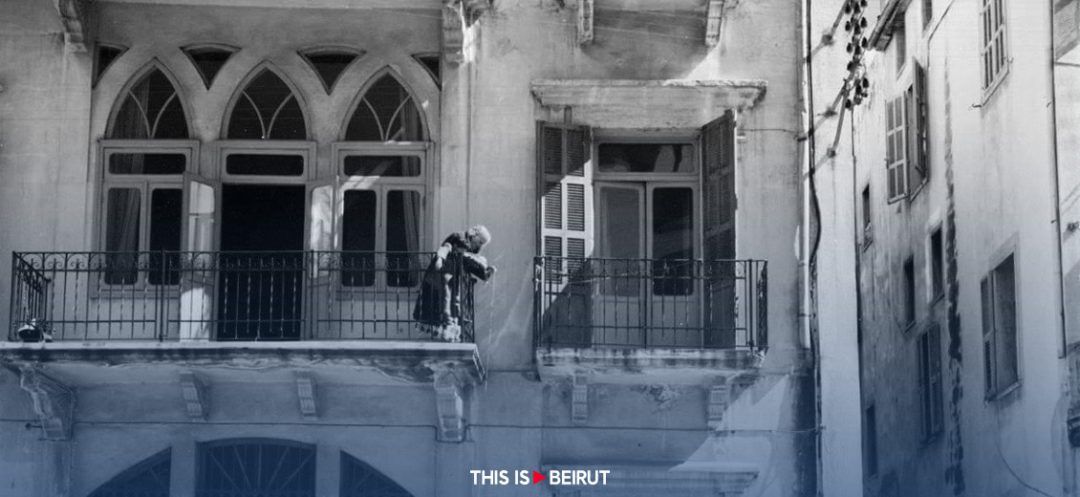
Over the centuries, navigating through various trends and movements, the triforium (triple bay) showcased remarkable adaptability, embracing diverse forms and the rich influences surrounding it. Resilient and unyielding, it has consistently reinvented itself. Morphing its three arches into a singular curve, it has evolved with the times, ensuring its enduring presence in the landscape, and firmly establishing its distinctive identity.
Art Nouveau flourished mainly between 1890 and 1910, but World War I ultimately brought an end to this dynamic creative expression. This artistic movement arose in reaction to the excessive rationalism and coldness associated with industrialization. It also sought to break free from the academic constraints rooted in Renaissance prototypes. Seeking to transcend historical forms rather than re-explore them, Art Nouveau offers an alternative to official historicism. It embodies a quest for originality and artistic innovation, expressing sensitivity through contemporary modes.
Feminine sensuality
Art Nouveau is distinguished by its naturalistic and feminine design, influenced by decorative abundance, flowing curves, vivid colors and asymmetry inspired by the whims of nature. Here, the female muse is portrayed as ethereal, mysterious, sensual and erotic. Much like the flowing undulations and curves, she is vibrant, free, indefinable and elusive. Art Nouveau challenges the constraints of uniformity and blossoms in diversity, adhering to the motto of merging art and life. It is a quest for new forms adorned with ornamentation inspired by fauna and flora, seizing the vibrant color palette of Japanese prints that permeate stylish interiors. The scientific work Formes artistiques de la nature by German biologist Ernst Haeckel, published between 1899 and 1904, served as a major source of inspiration. Artists also delved into illustrations from botanical to anatomical, drawing inspiration from the visuals found in Jules Verne’s books.
Nature as a model
In the 19th century, Eugène Viollet-le-Duc stated that architecture should align with the logic of nature. This will become the guiding philosophy of Art Nouveau, aspiring to evolve with similar organic flexibility. The three iconic architects of this movement adhered to the principles set forth by Viollet-le-Duc. In Brussels, Victor Horta embodied this philosophy. In Catalonia, Antonio Gaudi, the architect of the Sagrada Familia, viewed Viollet-le-Duc's work as his "architectural bible." Meanwhile, in France, Hector Guimard conceptualized industrial cast iron in the Gothic style endorsed by his esteemed mentor.
The prowess of these architect-artists lies in their ability to convey, through their works, the organisms in a state of growth rather than presenting finished products. They breathed life into their creations, similar to the sap coursing through plants, displayed through the veins and undulating movements. They unleashed infinite curves that embrace wood and stone, steel and glass. Victor Horta experimented with these materials at the Tassel Hotel in Brussels in 1892. Antonio Gaudi did the same in Barcelona at Casa Mila (1910), Park Güell (1900-1914) and the Sagrada Familia.
A youthful emerging art
Art Nouveau is an art movement driven by a generation of young artists. In Germany, it is known as Jugendstil, meaning "youth style." It epitomizes the concept of "total art" by embracing a wide spectrum of disciplines, ranging from architecture to everyday objects, including posters, mosaics, stained glass, sculpture and woodwork. Belgian architect Henry Van de Velde extended the dynamic curves into his design of women's dresses. In his publication Le déblaiement de l’art, he intellectualized the principle of continuity between decorative arts and the so-called fine arts.
The term "Art Nouveau" seems to have been introduced by Van de Velde. However, the name gained popularity in Paris, mainly with the opening of Siegfried Bing's gallery, known as the "Maison de l'Art Nouveau," in December 1895. This gallery showcased glassware and furniture by renowned artists like Tiffany, Lalique, Van de Velde, Gaillard and De Feure.
In distinct urban settings, Art Nouveau has indelibly shaped public spaces through the design of storefronts, building entrances, but mostly entryways of the 1900 Parisian metro stations. These are masterpieces created by the young Hector Guimard, who was back then under the age of thirty.
Some Haussmann-style buildings in Paris have adopted the curves and asymmetries inspired by nature, typical of Art Nouveau. This artistic movement is mainly urban and flourishes in major cities like Paris, Brussels, Vienna, Glasgow, and Barcelona, as well as in smaller cities such as Reims and Nancy.
Art Nouveau flourished mainly between 1890 and 1910, but World War I ultimately brought an end to this dynamic creative expression. This artistic movement arose in reaction to the excessive rationalism and coldness associated with industrialization. It also sought to break free from the academic constraints rooted in Renaissance prototypes. Seeking to transcend historical forms rather than re-explore them, Art Nouveau offers an alternative to official historicism. It embodies a quest for originality and artistic innovation, expressing sensitivity through contemporary modes.
Feminine sensuality
Art Nouveau is distinguished by its naturalistic and feminine design, influenced by decorative abundance, flowing curves, vivid colors and asymmetry inspired by the whims of nature. Here, the female muse is portrayed as ethereal, mysterious, sensual and erotic. Much like the flowing undulations and curves, she is vibrant, free, indefinable and elusive. Art Nouveau challenges the constraints of uniformity and blossoms in diversity, adhering to the motto of merging art and life. It is a quest for new forms adorned with ornamentation inspired by fauna and flora, seizing the vibrant color palette of Japanese prints that permeate stylish interiors. The scientific work Formes artistiques de la nature by German biologist Ernst Haeckel, published between 1899 and 1904, served as a major source of inspiration. Artists also delved into illustrations from botanical to anatomical, drawing inspiration from the visuals found in Jules Verne’s books.
Nature as a model
In the 19th century, Eugène Viollet-le-Duc stated that architecture should align with the logic of nature. This will become the guiding philosophy of Art Nouveau, aspiring to evolve with similar organic flexibility. The three iconic architects of this movement adhered to the principles set forth by Viollet-le-Duc. In Brussels, Victor Horta embodied this philosophy. In Catalonia, Antonio Gaudi, the architect of the Sagrada Familia, viewed Viollet-le-Duc's work as his "architectural bible." Meanwhile, in France, Hector Guimard conceptualized industrial cast iron in the Gothic style endorsed by his esteemed mentor.
The prowess of these architect-artists lies in their ability to convey, through their works, the organisms in a state of growth rather than presenting finished products. They breathed life into their creations, similar to the sap coursing through plants, displayed through the veins and undulating movements. They unleashed infinite curves that embrace wood and stone, steel and glass. Victor Horta experimented with these materials at the Tassel Hotel in Brussels in 1892. Antonio Gaudi did the same in Barcelona at Casa Mila (1910), Park Güell (1900-1914) and the Sagrada Familia.
A youthful emerging art
Art Nouveau is an art movement driven by a generation of young artists. In Germany, it is known as Jugendstil, meaning "youth style." It epitomizes the concept of "total art" by embracing a wide spectrum of disciplines, ranging from architecture to everyday objects, including posters, mosaics, stained glass, sculpture and woodwork. Belgian architect Henry Van de Velde extended the dynamic curves into his design of women's dresses. In his publication Le déblaiement de l’art, he intellectualized the principle of continuity between decorative arts and the so-called fine arts.
The term "Art Nouveau" seems to have been introduced by Van de Velde. However, the name gained popularity in Paris, mainly with the opening of Siegfried Bing's gallery, known as the "Maison de l'Art Nouveau," in December 1895. This gallery showcased glassware and furniture by renowned artists like Tiffany, Lalique, Van de Velde, Gaillard and De Feure.
In distinct urban settings, Art Nouveau has indelibly shaped public spaces through the design of storefronts, building entrances, but mostly entryways of the 1900 Parisian metro stations. These are masterpieces created by the young Hector Guimard, who was back then under the age of thirty.
Some Haussmann-style buildings in Paris have adopted the curves and asymmetries inspired by nature, typical of Art Nouveau. This artistic movement is mainly urban and flourishes in major cities like Paris, Brussels, Vienna, Glasgow, and Barcelona, as well as in smaller cities such as Reims and Nancy.
Read more



Comments